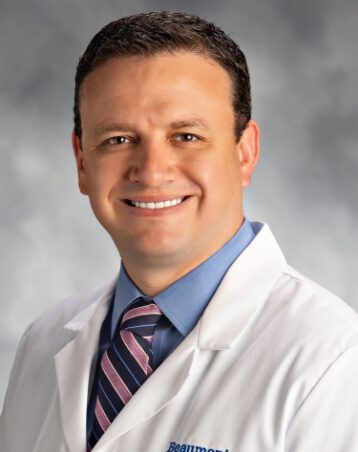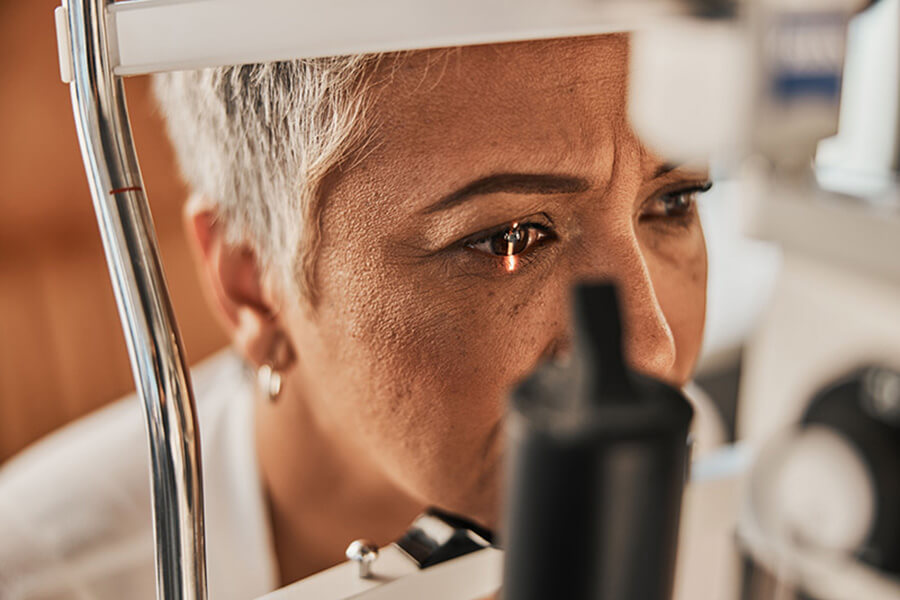Cataract Surgery
Experienced Surgeon. Advanced Lens Technology. Custom Vision Solutions.
John’s Cataract Surgery Journey at Clear Vision Center
Top Cataract Surgery Center in the Troy and Rochester Hills Area
If you need cataract surgery, look no further than the Quad-A certified Clear Vision Cataract & LASIK Center, Rochester Hills and Troy’s leading provider of cataract surgery. We are the area’s top-rated ophthalmologists for cataract and vision correction surgery with a 5-star Google rating due to our unmatched commitment to patient outcomes and experience. Read more to learn more about cataracts, cataract surgery (including custom vision correction options), and why you should consider choosing the Clear Vision Cataract & LASIK Center for your cataract procedure.
Is it Time for Cataract Surgery?
Cataracts cloud the normally clear lens of the eye, eventually making it difficult to perform daily activities such as reading, driving, or computer work. If you feel like cataracts might be impacting your life, it may be time for a professional evaluation of your cataracts. With his decades of experience and reputation for outstanding surgical outcomes and effective communication skills, you can trust that Dr. Vrabec is the best cataract surgeon in the metro Detroit area for providing you with a thorough and honest surgical opinion.

Top Cataract Surgery Specialists in Rochester Hills
Dr Vrabec is a licensed & board-certified ophthalmologist and cataract surgery specialist who has personally performed over 6000 cataract surgeries in over 15 years of practice. He is a talented eye doctor in Rochester Hills, and his commitment to safe surgery and excellent outcomes ensures that if you do ultimately choose to have cataract surgery, you are in skilled hands. Our entire team at the Clear Vision Cataract & LASIK Center has a vast knowledge and decades of combined personal experience with the latest surgical techniques and vision correcting lens (IOL) options, ensuring that you will feel at ease not only with your decision to have cataract surgery, but also what vision correction option is the best fit for you.
What Are Cataracts?
Cataracts are a very common eye condition that can cause blurry vision, among many other symptoms. Inside your eye is a clear lens that focuses light onto the back of your eye so you can see. As you age, the proteins that make up the clear lens start to clump together and make the lens cloudy. The cloudy lens blocks light from reaching the back of your eye, making your vision blurry. Cataracts usually develop slowly over time. At first, you might just need more light to see things up close or have more trouble with glare while driving at night. However, as cataracts worsen, your vision might get more blurry or colors start looking faded. Eventually, you will need cataract surgery to restore your vision. Cataract surgery is a safe and effective procedure that can allow you to see clearly once again.


Laser Cataract Surgery
Clear Vision Center specializes in laser cataract surgery, which uses advanced laser technology for a safe and optimal outcome. Laser cataract surgery uses state-of-the-art technology to perform most steps of the procedure with a laser instead of a scalpel or handheld tools used in traditional cataract surgery. By using a laser, your surgeon is able to perform the procedure with unparalleled safety and precision. Clear Vision Center uses a femtosecond laser for its cataract procedures with advanced technology lenses (IOL) such as the Rayner EMV advanced distance lens, and the Alcon PanOptix trifocal lens.
Benefits of Laser Cataract Surgery:
- Painless, bladeless procedure
- Fast recovery
- Increased accuracy and precision
- Reduces astigmatism and need for glasses
Traditional Cataract Surgery
In traditional cataract surgery, the surgeon uses a scalpel to make a small incision and remove the cataract. They may then break the cataract into smaller pieces with an ultrasonic device to easily rinse the cataract from the eye. After the lens is removed during your cataract surgery, the surgeon will insert a new intraocular lens (IOL) into the eye. Traditional cataract surgery may result in needing glasses after surgery.

A PERSONALIZED APPROACH TO
Cataract Surgery in Rochester Hills
Our philosophy is to give every patient who is a candidate the option to choose to regain control of their vision and see the world without glasses or contacts after cataract surgery. With our extensive screening process, advanced lens technology, and fully accredited office-based surgery center, we are the leaders for cataract surgery in Rochester Hills and Troy areas. Even if you’ve been wearing corrective eyewear your entire life, we have the tools available to not only remove the cloudy cataract that is clouding your vision, and also reduce or eliminate your glasses. While some dream to be able to drive the scenic route without fussing with glasses, others want to play a match of golf or pickle ball without having encumbering eyewear getting in the way. Whatever your dream activity may be, we are here to help you achieve your goals of living life as it was meant to be – without glasses or contacts!
Top 10 Reasons to Have Cataract Surgery
At Clear Vision Cataract & LASIK Center in Rochester Hills
Vision Correction Options with Cataract Surgery
ADVANCED MULTI FOCUS

ADVANCED SINGLE-FOCUS

Common Questions About Cataract Surgery
Explore Your Cataract Surgery Lens Options in Rochester Hills
Light-Adjustable Lens
A light-adjustable lens allows you to customize your vision after the procedure. We use a revolutionary lens implant that can be adjusted or fine-tuned to your liking in the weeks following surgery. This allows us to correct your astigmatism after the eye has healed, and with blended vision we can reduce or eliminate your dependence on glasses. More Information On Light-Adjustable Lens
Advanced Multifocus IOL
With skilled selection and placement by an experienced surgeon, a multifocus IOL corrects distance, intermediate (computer), and near vision. It also corrects mild-moderate degrees of astigmatism. Patients may in some cases require mild readers for very tiny print, particularly in dim lighting conditions. Nighttime glare and halos are a possibility, but in most cases do not impact your ability to drive at night. Examples of this lens are the J&J Tecnis Multifocal, J&J Synergy, Alcon PanOptix, and Alcon Vivity IOLs.
Advanced Single Focus IOL
With skilled selection and placement by an experienced surgeon, an advanced single focus lens goes beyond traditional (basic) lens optics to provide not only higher quality distance vision, but also corrects astigmatism and provides extended depth of focus. Two examples of this advanced technology are the Rayner EMV lens and the J&J Eyhance toric lens, which expand the traditional range of focus to include distance & midrange vision (computer), and in many cases moderate sized near print. (Most will still require reading glasses for fine print with this option). The improved distance quality and increased depth of focus without creating nightime driving glare and halos make this upgrade a very popular option for our patients.


